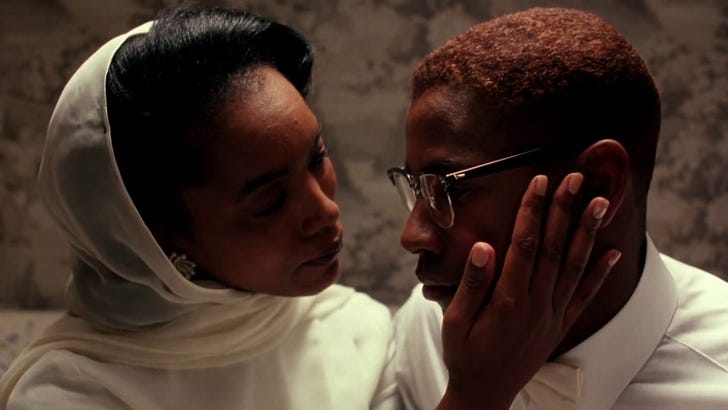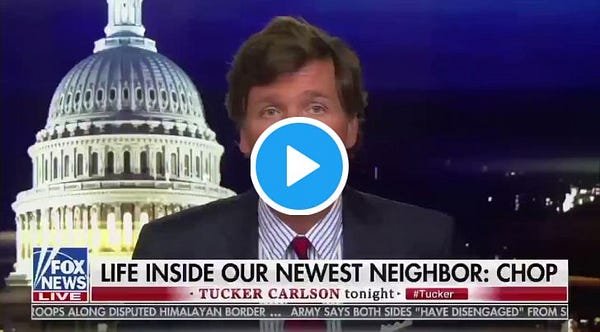Volume 1, Issue 9: Black Lives Matter Playlist III
ScreenWorlds and [in]Transition partnership, PTA b-day, Into the Zone of Oz
My MPhil dissertation has been submitted! Listeners of The Video Essay Podcast can expect a new episode (and maybe two) in the next week or so. Starting next week, I will resume writing a blog-style essay in this space. I will also dedicate a section of this newsletter each week to highlighting videos from the Black Lives Matter Video Essay Playlist. Below are a few of the works I have found most compelling. As always, we are still accepting recommendations for the list!
News & Notes
I need your help curating this section!! Have something that should be featured? Email me: willdigravio@gmail.com
ScreenWorlds and [in]Transition have partnered on a call for video essays, “African Screen Worlds in Conversation with Other Screen Worlds.” Learn more here. The deadline is October 1, 2020.
Today is Paul Thomas Anderson’s birthday! Here’s a video essay guide I wrote for Film School Rejects two (woah!) years ago.
“Short Attention Span Criticism” from SCMS.
FILMADRID in partnership with MUBI has released their annual slate of video essays. Watch here.
The Pesaro Film Festival is inviting students aged 18-35 to submit videographic works of any length made between 2018 - 2020. More here.
The audiovisual essay journal Tecmerin issued a new CFP and is accepting submissions until August 1, 2020.
Student Spotlight: Q&A with Tarc Bosc/Marc Barceló
Each week, the newsletter will aim to feature a video essay made by a student(s) along with a short Q&A. Is there a student(s) or former student(s) of yours you would like to see highlighted? Email willdigravio@gmail.com.
Tarc Bosc/Marc Barceló created this video essay in the Elías Querejeta Zine Eskola (master’s degree, in San Sebastian, Basque Country) under the supervision of Cristina Álvarez.
How did you arrive at the idea for this video essay?
I had to read Geoff Dyer's ZONE book for a subject of the master’s degree I am taking, which is a wonderful approach to Tarkovsky’s Stalker from an intimate and fresh perspective, a memory exercise of putting words to the experience of carrying a film in your interior for years, an extravagant ode to subjectivity. I admit that before reading this book, the relationship I play with in the video essay had never crossed my mind; in fact, in the book, this analogy is named in a short footnote. It was amazing to realize that the use of sepia tone and color (at least the passage from one to the other) serves a very similar purpose in both films: entry to another world, which in turn requires a journey to a place (the Room / the Wizard) that will make your dreams come true. And of course, that triad (absent in the video essay), the Tin Woodman, the Cowardly Lion and the Scarecrow, who in Stalker are the Professor, the Writer and Stalker himself. The impulse to carry out the video essay was this wish to"prove" that relationship for myself and probe how the films dialogue along with the images themselves, moving away from metaphors and literary or memory analogies.
Your video essay takes on a poetic mode and a minimalist aesthetic. Was this always your plan? How did you decide that this was the best way to present your essay?
I only had a preconfigured idea: I sensed that swapping the sound between the two movies could give me answers. But I couldn't say why. In fact, I think it has to do with approaching the creative field like this, more intuitive, and I prefer to discover what happens during the process. I don't think I could do a very analytical video essay (ever?), which would be a more natural way, for me, of approaching ideas in writing.
My plan was to start from the moment when both films mutate and color invades their storylines. I was stuck for several weeks with a previous version, where the double screen did not exist. The relationship worked only by cut, along with that central use of the swapped sound, but I could feel that something was missing. Thanks to the contributions of my teacher Cristina Álvarez I was able to rethink it.
What did you learn about these two films and their relationship that you didn't know before you made the essay? What did the process teach you?
I can start by saying that although the relationship is obvious for me now, it was not so easy to actually show how they nurture each other. For instance, Stalker’s dialogue (when they just enter the Zone) works like a miracle when you listen to it while watching Dorothy going into the Land of Oz, but I found it impossible to find an equivalent in reverse. In The Wizard of Oz I could not find a dialogue within the arrival scene that would enrich the idea and concept of the Zone. The process taught me, as it always does, that you have to be open to manipulating something more than you wanted. If anything was clear to me was the wish to relate the two transition scenes being very faithful to their internal tempos. Much of it remained very faithful; however, towards the end, I needed the three men in Stalker to start a path, because they stay still a long time before leaving the wagon and that image did not quite work as an ending. That's where I chose the scene that Tarkovsky shoots through the abandoned car, which happens a few minutes later, and there I saw that perhaps what he needed from The Wizard of Oz was the Munchkins saying goodbye to Dorothy by singing the song that will be the main leitmotif of her/their journey.
The movement of the images was very effective, especially when matched with certain moments in Judy Garland's singing. How did you navigate this process? Were there any specific editing choices you made that you think helped enhance the relationship between sound and image?
This was a lot of fun to try. I didn’t see necessary at all to include the famous song Somewhere Over The Rainbow, but I started there for the sake of playing and trying something less apparently loaded with meaningful analogies. I was surprised to see that, for some reason, the traveling that accompanies those who approach the Zone grew poetically towards a very precious place while the song guided them. It actually talks about that dream place that they are approaching, while Dorothy still lacks several scenes to reach it. So I decided to leave it, although for the final version I shortened it trying not to have a very long starting “music video like” scene in the video essay. Specifically, in the edition process of that part, I realised that when Dorothy starts singing, I needed some sort of movement in Stalker, so that's exactly when the camera travels towards Stalker (the character). Then it naturally happened that this rhythm works by itself because when Dorothy sings the same verse again (“somewhere over the rainbow”) the camera returns to the previous character. When these things happen I feel that I’m walking the good way. I could say that what I enjoy the most making video essays are these little treasure encounters.
SUBSCRIBE TO THE PODCAST: iTunes | Spotify | SoundCloud





